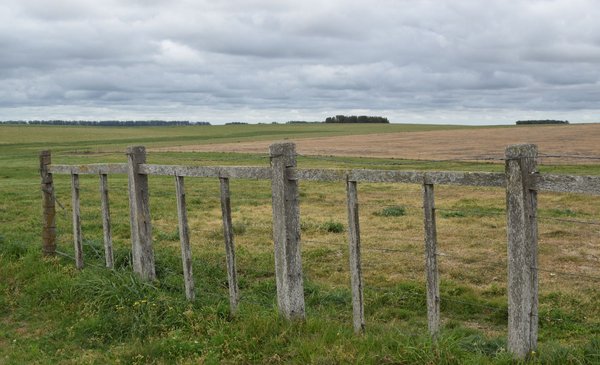The land market is nearing the end of the year with very little supply and high demandagreed market operators consulted by The Observer. In addition, the prices that are handled are good, they indicated, both for sales and for leases. Foreign investors participate in the market, and this year has seen a prominence of Argentinesindicated Rodrigo Silveira, director of Silveira Rural Business.
So far in 2022, that firm has received “five to six queries per week” from investors who wanted to place their capital in the Uruguayan countryside, and most of them have materialized as businesses, the businessman commented.
“They seek to invest in Uruguay because of the legal and political stability we have, because they trust our president and because Argentina is doing things wrong,” he said.
Unlike the Argentines, Brazilian investors have not flocked to Uruguay this year, reported. Consultations from that country arrive and some do business, but they are not the majority.
On whether the elections in that country could affect the local land market, Silveira said: “This is the second government of Lula (da Silva) and you already know him, there is not so much uncertainty. Suddenly in his first government there was a flood of Brazilians (asking to invest), because they did not know what was going to happen ”.
Fernando Indarte, director of Indarte & Cía, said that although inquiries have been received from interested parties for fields located in departments bordering Brazil, after the entry of the new government “history did not change.”
Pablo Albano, head of the Campos Department of Zambrano & Cía, added that although there could have been a change in market behavior after the elections, it has not happened.
“They have been settling in their own country and there has not been a wave of investors. There were consultations but without concretions”, he counted.
Outsiders of agriculture
There are several factors that contribute to good demand, while the low supply is mainly due to the fact that contracts are long in this market, tenants do not usually change the land on which they work from one year to the next, and those who invest in buying a field today they are not deciding to sell.
In Uruguay, if the tenant pays on time, takes care of the fields and complies with the agreement with the owner of the land, “he continues for at least 10 years,” said Indarte. “It is not customary for field owners to change tenants. That means that the changes do not change hands and that is why there is little supply. The fields are not a merchandise that goes on sale every year”, mentioned the businessman.
Silveira commented that in this, a year of many consultations, actors linked to the agricultural sector and others outside it have been seen in the market, who seek to diversify their investment options.
From Silveira Negocios Rurales an Agricultural Consultancy is carried out, he said, with which clients are explained what could be their best investment option. “There are many people wanting to enter a sector that is still profitablewhich makes leasing land very difficult,” he said, adding that the leases “are paying very well.”
A cattle farm with agricultural aptitudes located in Cerro Largo has a rental value of US$140 per hectare, while a purely cattle farm with a Coneat index greater than 80 is valued at US$110, he explained.
“In the historical ones they are very good prices, because before those same fields were paid at US$ 90 per hectare,” he explained.
On the other hand, a breeding field with a Coneat index of less than 80 is paid between US$80 and US$90 per hectare, he said.
Albano explained that rents “were dynamic all year, with little supply and a lot of demand”and now, coming to the last month of the year, “the market has stalled a little more”, due to the drop in cattle a few weeks ago, because the tenants have decided to wait before offering their fields.
ranking
Indarte made a ranking of the most chosen lands and assured that those with agricultural aptitude are the most sought after, then the forest fields stand out and then the ranchers with capacity for improvement that are located south of the Río Negro. According to him, the proximity to the capital is highly valued, mainly by those investors who are new to the sector.
higher interest rates
Regarding the sale, Silveira assured that “the market is still heated in terms of prices.” A breeding field is sold at US$2,500 per hectare, a forestry field is valued at US$3,000 per hectare, a wintering field at US$3,540 per hectare, and an agricultural field –depending on the area in which it is located and the productivity it yields– trades between US$6,000 and US$11,000, he explained.
Albano added that by the end of the year, prices “stabilized” a bit after the rise they had compared to 2021. Field sales slowed down a bit due to bank interest rates, in which “the Uruguayan players leveraged themselves”, he commented. They went up, and that has slowed down the market and has generated “competition” with other items, because “today there are alternatives to place the money that there was not before, other than buying a field.”
Pablo Albano indicated that the land market is currently facing an “uncommon” scenario, because while there are high interest rates, which generate more competition and therefore require the land to provide more profitability, the prices of raw materials they are going up, the dollar is going down and there is inflation, so “the land is worth more”.
“These are conflicting indicators that are not common, which makes it unpredictable to say what can happen,” he assured, but foresaw that “the price of land should not drop.”







